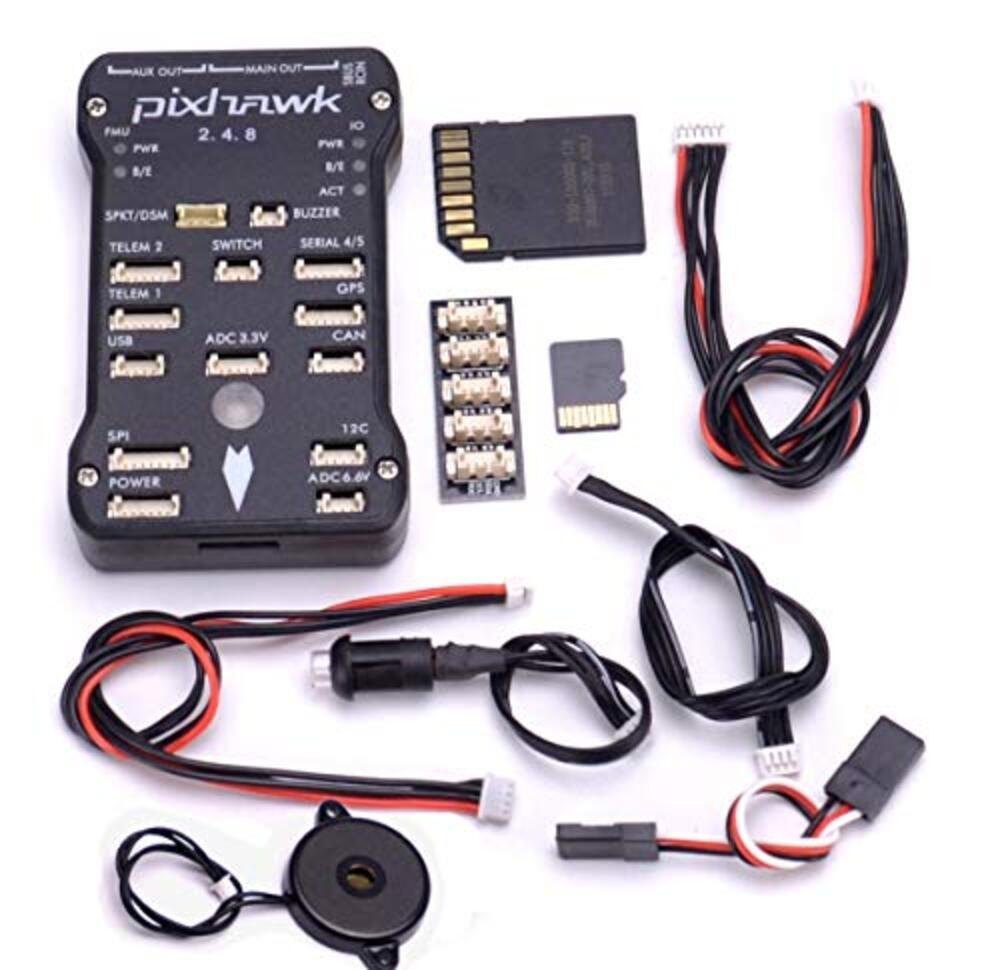Drones have rapidly transformed from a niche hobby to a ubiquitous technology with a wide range of applications, from photography and cinematography to agriculture, search and rescue, and even military use. One of the key factors contributing to their increasing popularity is the sophisticated autopilot and flight control systems that make them capable of autonomous flight. In this blog post, we’ll delve into the world of drone autopilot and flight controllers, demystifying the technology that allows these devices to navigate the skies.
Understanding Drone Autopilot
The concept of drone autopilot is akin to the autopilot systems in commercial aircraft. It enables a drone to perform various tasks autonomously, such as takeoff, landing, navigation, and even complex maneuvers. Autopilot systems are a blend of hardware and software that work together to make real-time decisions, allowing drones to adapt to changing conditions. These systems are equipped with a variety of sensors, including GPS, altimeters, gyroscopes, and accelerometers, to maintain stability and control.
The Role of GPS
Global Positioning System (GPS) plays a pivotal role in drone autopilot systems. It allows the drone to determine its precise location in three-dimensional space. This information is used for navigation, path planning, and geofencing. Advanced autopilot systems can also utilize differential GPS, which provides even greater accuracy and reliability, making it suitable for professional applications like surveying and mapping.
Components of a Drone Flight Controller
The flight controller is the heart and brain of a drone. It receives data from various sensors, processes it, and sends commands to the drone’s motors to adjust its orientation and position. The primary components of a drone flight controller are:
1. Microcontroller: This is the core processing unit of the flight controller. It runs the flight control software and processes data from sensors.
2. Sensors: Drones are equipped with various sensors, including accelerometers, gyroscopes, magnetometers, barometers, and GPS. These sensors provide information about the drone’s position, orientation, altitude, and external environmental conditions.
3. Communication Ports: Flight controllers have communication ports for connecting to other devices, such as remote controllers, telemetry systems, and even companion computers.
4. Motor Outputs: The flight controller sends commands to the drone’s motors to adjust the thrust and achieve the desired flight characteristics. It controls the drone’s stability, responsiveness, and overall performance.
Types of Flight Controllers
There are various types of flight controllers, each designed for different types of drones and applications. Some of the most common types include:
1. Open-Source Flight Controllers: These controllers are based on open-source hardware and software, making them highly customizable and popular among DIY drone enthusiasts. Examples include the Pixhawk and ArduPilot.
2. Commercial Flight Controllers: These controllers are designed for consumer drones and are often integrated into the drone’s circuitry. DJI’s flight controllers are a prime example of this category.
3. Autopilot Systems for Professional Drones: For industrial and professional applications, specialized flight controllers are used. They are equipped with advanced features, redundancy, and more precise sensors to ensure reliability and safety.
Autopilot Modes
Drone autopilot systems offer various modes to cater to different tasks and requirements. Some of the common autopilot modes include:
1. Stabilize Mode: In this mode, the drone maintains a stable hover, making it ideal for aerial photography and videography.
2. Position Hold: The drone holds its position based on GPS coordinates, making it useful for surveying and mapping tasks.
3. Follow-Me Mode: In this mode, the drone autonomously follows a moving object or person, great for capturing dynamic shots.
4. Waypoint Navigation: Drones can be programmed to follow a pre-defined path, enabling autonomous surveying, inspection, and search and rescue missions.
Challenges in Drone Autopilot
While drone autopilot systems have come a long way, there are still challenges that need to be addressed. Some of the notable issues include:
1. Regulations: The drone industry is heavily regulated, and compliance with airspace rules and privacy laws can be challenging for drone operators.
2. Safety: Ensuring the safety of autonomous drones, especially in complex environments or during emergencies, is an ongoing concern.
3. Interference: Signal interference from other electronic devices or radio sources can disrupt communication between the drone and the flight controller.
4. Battery Life: The limited battery life of drones restricts their operational range and flight time.
The Future of Drone Autopilot
As technology advances, the capabilities of drone autopilot systems will continue to improve. Enhanced sensors, machine learning algorithms, and better integration with other technologies will lead to even more reliable and intelligent drones. We can expect to see drones playing a more significant role in various industries, including healthcare, logistics, and infrastructure inspection.
In conclusion, drone autopilot systems and flight controllers are the brains and brawn behind the unmanned aerial vehicles that have become an integral part of our modern world. These technologies have made drones more accessible, versatile, and useful across a wide array of applications. While challenges remain, the future of drone autopilot is promising, and we can anticipate further advancements that will shape our world in innovative and exciting ways. Whether you’re a drone hobbyist or a professional, understanding these systems is key to harnessing the full potential of these remarkable flying machines.


